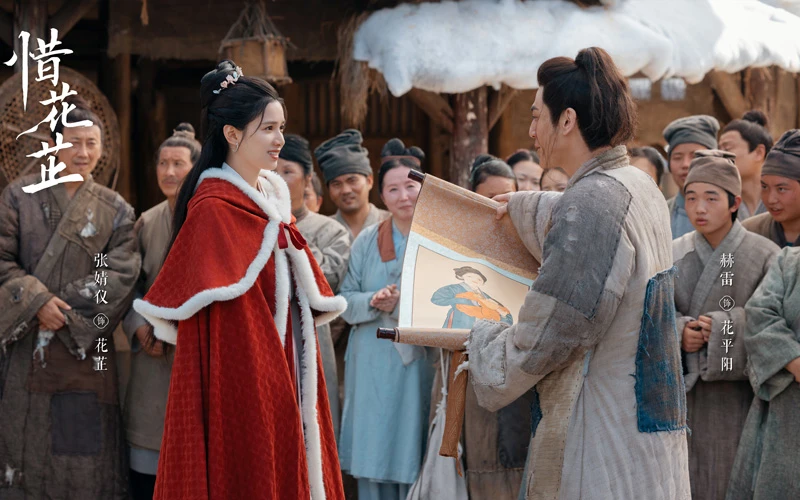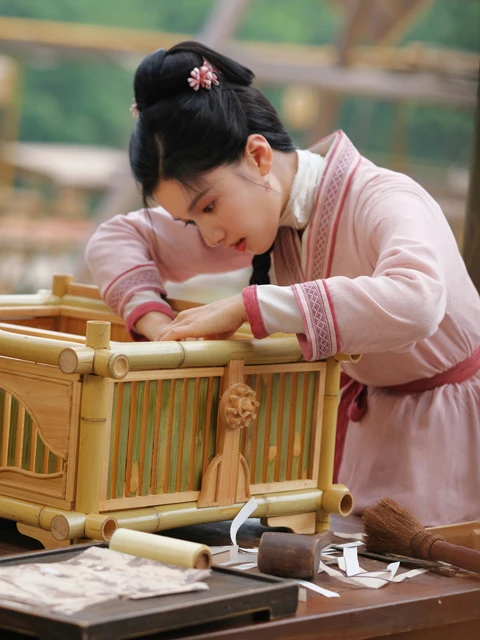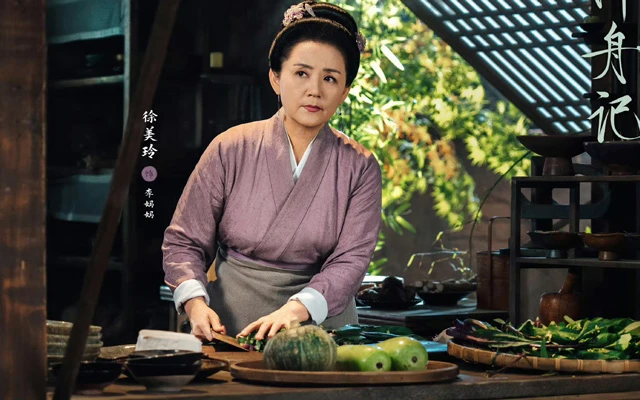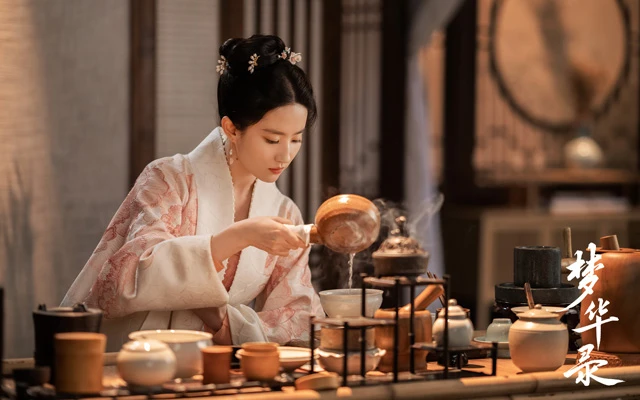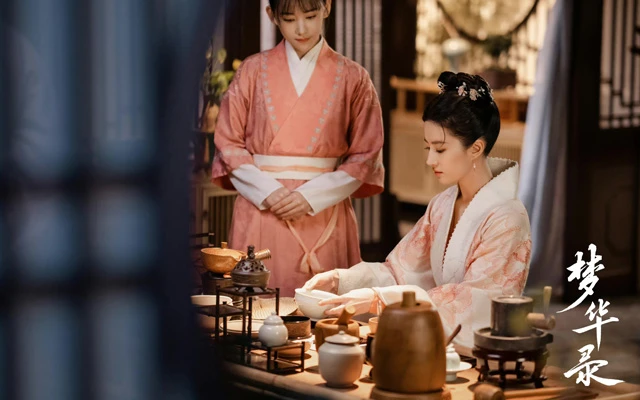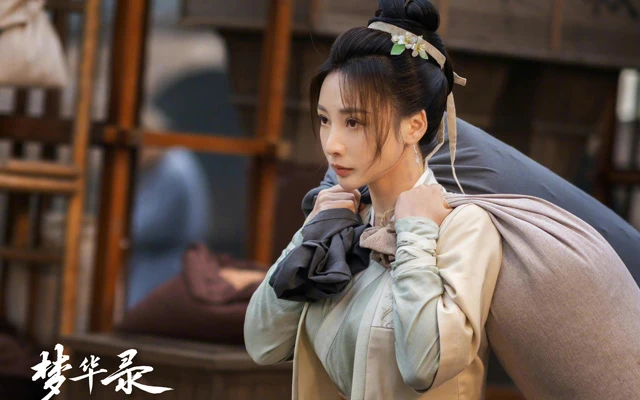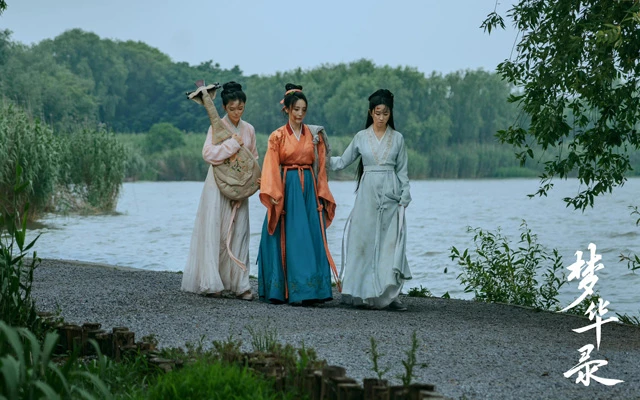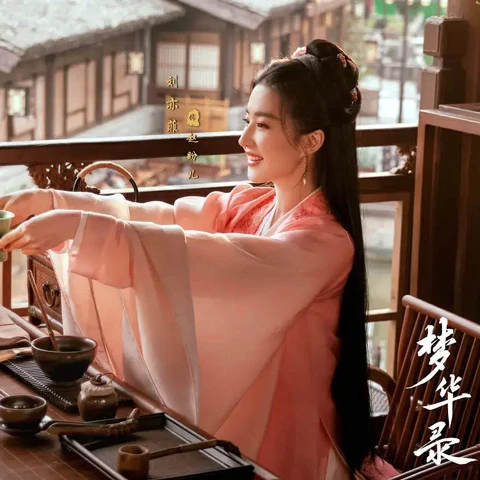In recent years, the trend of female-centric dramas, including ensemble cast dramas and strong female lead dramas, has become prominent. This trend has extended into historical dramas, leading to new narratives where female protagonists build their fortunes and conquer the business world through their own efforts. For instance, "Blossoms in Adversity," which concluded in early May, tells the story of the noblewoman Huazhi who, along with her family, overcomes adversity by starting a business.
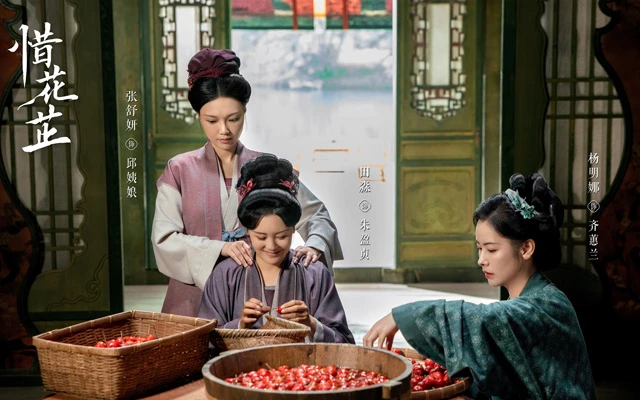
This wave of female protagonists navigating the business world in historical dramas shows no signs of slowing down. Numerous dramas wrapped filming from last year to this year, featuring female leads as businesswomen. According to official synopses, the female lead in "Liu Zhou Story," Liu Miantang, opens a porcelain shop; the protagonist in "Brocade Odyssey," Ji Yingying, is involved in the Shu brocade business; and the lead in "The Story of Pearl Girl," Duanwu, deals in jewelry.
Moreover, the ongoing production "Flourished Peony" will narrate the story of He Weifang, who starts a flower business. Adding to this, "A Dream of Splendor," which aired last year, centers on the tea house owner Zhao Pan'er, who expands her small tea house into the largest restaurant in Dongjing. The question arises: Could ancient women realistically engage in so many businesses, selling flowers, cloth, tea, fruit, and jewelry?
Female merchants: a historical perspective
The premise that female protagonists in Chinese historical dramas often flock to do business is grounded in the historical reality that women in ancient times did engage in commerce. The existence of female merchants provides a rich background for such TV show plots. Historical records from as early as the Qin and Han dynasties reveal the involvement of women in commercial activities, with many notable examples documented in official histories.
For instance, in "Records of the Grand Historian" (Shiji), the "Huo Zhi Lie Zhuan" chapter recounts the story of "Ba Gua Fu Qing," a mining magnate from the Qin dynasty. She profited from a cinnabar mine, and the account mentions, "A widow named Qing from Ba County, who profited from the cinnabar mine for several generations, accumulated great wealth. The Qin Emperor regarded her as a virtuous woman and honored her by building the Tower for her."
In another section of "Records of the Grand Historian," within the "Basic Annals of Gaozu" (Emperor Gaozu of Han), it notes that two women, Wang Ao and Wu Fu, sold wine for a living. The text describes, "(Liu Bang) often bought wine on credit from Wang Ao and Wu Fu, drinking until he was drunk... He would often leave without paying, and over time, the debt accumulated. However, the two families never demanded repayment, choosing to discard the debt."
Additional Han dynasty examples include the mother of Dong Yan, a character mentioned in "The Book of Han" (Hanshu). Dong Yan’s mother earned a living by selling pearls, operating in a manner that involved frequenting the homes of the nobility and showcasing her merchandise directly to potential buyers.
The involvement of women in commerce was not restricted to the Qin and Han periods. In later eras, records continue to document female participation in business activities. For example, "The History of Song" (Songshi) mentions: "All small-scale merchants, both men and women, dealing in various transactions, along with merchants from Lingnan trading medicinal herbs and homemade silk fabrics, were not taxed if they did not sell in the market." Indicates that women engaging in business was accepted and their rights were somewhat protected by policies aimed at benefiting the populace.
The Ming and Qing dynasties also saw the emergence of female entrepreneurs. According to Professor Chen Baoliang of Southwest University’s College of History and Culture, women in the Ming dynasty not only handled household chores but also engaged in various forms of productive labor. This period saw the rise of professional women. Female merchants often traded handcrafted goods among the gentry, while seller women exchanged jewelry or sold embroidered fabrics, hair accessories, and sometimes even served as matchmakers.
Women in the Qing dynasty were not entirely dependent on men for their livelihood. Researcher Xu Ning from Shanghai Normal University's School of Marxism found that women across different social strata participated in family or household economic activities to varying degrees. Some women were not only self-reliant but also became the economic mainstays of their families.
Despite these historical precedents, recent and upcoming historical dramas like "Flourished Peony," "Brocade Odyssey," and "The Story of Pearl Girl" are set in the Tang dynasty, while "A Dream of Splendor" is set in the Song dynasty. This raises the question: were business opportunities more abundant or favorable during the Tang and Song dynasties?
What kind of business are the women of Tang and Song doing?
Based on the prosperity of the commodity economy and the development of industry and commerce, it can be inferred that doing business during the Tang and Song dynasties was relatively favorable. According to the research of Professor Zeng Yurong from the School of History and Culture at Hubei University, the increasingly prosperous commodity economy during the Tang and Song periods spurred a lasting commercial atmosphere in society, leading to a continuous increase in the population engaged in industry and commerce.
From the available data, it appears that women in the Tang and Song dynasties were involved in a diverse range of commercial activities. This historical richness provides ample material for TV dramas set in the Tang and Song periods, making them relatively easier to produce. So, what kinds of businesses were Tang and Song women actually engaged in. Was it really like the TV dramas depict, with women selling flowers, cloth, wine, and jewelry? Let’s start with the Tang Dynasty. According to Professor Gou Lijun from the Department of History at Jinan University, in terms of the scale of business operations, Tang Dynasty women could be classified into those engaged in large-scale commerce and those involved in small to medium-sized businesses.
A typical representative of large-scale commerce was Yu Daniang, who managed a fleet of ships engaged in long-distance trade between Jiangxi and Huainan. According to the historical record "Tang Guo Shi Bu" by Li Zhao of the Tang dynasty, it was noted that "it was said in Jianghu that no ship could carry ten thousand [units of measure], with the largest ships holding eight or nine thousand shi. However, during the Dali and Zhenyuan periods, Yu Daniang's ships were the largest, accommodating families, growing vegetables, and employing hundreds of workers. Her ships traveled south to Jiangxi and north to Huainan once a year, yielding substantial profits. All large ships belonged to wealthy merchants."
This indicates that while the carrying capacity of large ships at that time was around eight to nine thousand Dan, Yu Daniang's ships were so large that they could house families, grow vegetables, and employ hundreds of workers. The record also implies that large ships were owned by wealthy merchants. Although it is challenging to ascertain the exact reasons for Yu Daniang's business ventures or the specific projects her fleet undertook, it is evident that her operations were large-scale, extensive, and highly profitable.
Of course, most women engaged in small to medium-sized businesses, with many running restaurants, inns, and taverns. For instance, "Taiping Guangji" documents instances of women running inns that also provided meals. One example is Sima Zhengyi, who, while traveling through Lishui, found himself hungry and anxious until he encountered a new inn run by a woman who welcomed guests and offered abundant and clean food.
Additionally, many women in the Tang dynasty sold daily necessities and household items on a small scale. "Taiping Guangji" provides numerous accounts, such as women selling flowers ("stayed at an inn, saw a woman selling flowers"), tea ("an old woman, about seventy years old, sold tea in the market every morning, with people scrambling to buy it"), and cosmetics like "hu fen" ("a wealthy family had only one son, who saw a beautiful woman selling 'hu fen' in the market and fell in love with her").
There were also entrepreneurial women who used novelty to attract business. One example involved profiting from "Yang Guifei's socks." "Tang Guo Shi Bu" records that "when Emperor Xuanzong fled to Shu, he ordered Gao Lishi to strangle Yang Guifei under a pear tree in front of a Buddhist hall at Mawei Post. The innkeeper's wife found one of her embroidered stockings, and passing travelers would pay to see it, yielding significant profits over time, making the innkeeper wealthy."
Another example involved an elderly woman selling "love medicine" in the streets. "Taiping Guangji" records that "during the Dragon Boat Festival in Panyu, the streets were lively with the sounds of love medicine sellers. People laughed and observed, seeing an old woman carrying strange herbs from the mountains, selling them to wealthy women." In summary, from large-scale businesses involving fleets to small-scale ventures like selling flowers, tea, and cosmetics, women in the Tang dynasty indeed engaged in various commercial activities.
In the Song dynasty, women continued to engage in diverse businesses. According to researchers from Hebei University of Technology, Song dynasty women were involved in both specialized and mixed business forms. Specialized businesses included opening shops or selling goods on the move, involving services like catering, accommodation, and medicine, as well as general merchandise stores. Mixed businesses often involved small-scale artisans who were both workers and merchants, as well as rural women who combined farming with commerce, selling self-produced items like woven goods, seafood, firewood, tea, fruits, and vegetables.
Despite the diversity of women's commercial activities during the Tang and Song dynasties, the business ventures depicted in historical dramas: such as selling flowers, tea, and fruits, or running taverns—are not entirely fictional. However, the portrayal of female protagonists in dramas like "Liu Zhou Story," where Liu Mian Tang helps launch a porcelain brand, "Brocade Odyssey," where Ji Ying Ying revitalizes the silk industry, and "The Story of Pearl Girl," where Duan Wu scales the heights of jewelry art, raises the question: was it truly so easy for ancient women to achieve entrepreneurial success?
Entrepreneurship is challenging, but persistence pays off
Historical research indicates that female entrepreneurs during the Tang and Song dynasties faced considerable societal challenges, with their motivations and business scales reflecting the constraints of their times. Scholars like Professor Gou Lijun of Jinan University's History Department have noted that many women in the Tang dynasty turned to business out of necessity. Widows or those without support often found themselves compelled to engage in commerce to survive. Similarly, researcher Zhang Jinhua from Hebei University of Technology found that Song dynasty women often took up business primarily due to circumstances such as widowhood or childlessness.
This compulsion to enter business during times of crisis meant that these women's ventures were typically small-scale with limited scope and investment. Both Gou Lijun and Zhang Jinhua's studies highlight that most female entrepreneurs in the Tang and Song periods were involved in low-investment, quick-return industries like food services, personal services, and handicrafts.
This context aligns well with the portrayal of female entrepreneurs in Chinese historical dramas. For instance, in "The Story of Pearl Girl ," the protagonist Duanwu is a pearl collector who escapes a harsh pearl farm; in "Brocade Odyssey," Ji Yingying's father is killed for a secret recipe; in "Flourished Peony," He Weifang leaves a difficult marriage to start anew; and in "A Dream of Splendor," Zhao Pan'er is abandoned by her fiancé. These stories reflect the survival pressures and reluctant motivations similar to those faced by historical women entrepreneurs.
Despite the historically small scale of female-led businesses, these dramas' protagonists often strive to build significant enterprises. This ambition, while challenging, underscores the inspirational themes of perseverance and self-reliance that are central to these narratives.
Even within the constraints of a feudal society, female entrepreneurs displayed commendable qualities. For example, "Taiping Guangji" recounts the story of Madam Wang from Jiangning County, who was praised for the fair pricing and quality of her wine. This focus on product quality was a hallmark of her reputation.
Moreover, there was an awareness of the value of celebrity endorsements. When Su Shi was exiled to Hainan, a neighboring old woman making and selling fried dough twists asked him to compose a poem to promote her product. Su Shi obliged, and his poem helped her business gain fame. The astuteness and business acumen of these women were often celebrated. Song dynasty poet Chen Pu's "Gudian Nu" praises the intelligence and resourcefulness of female merchants in Gutian, Fujian, describing them as dominant figures in the market.
In the Song dynasty, particularly in regions like Fujian and Guangdong, women's participation in trade was even more pronounced. The geographical classic "Lingwai Daida" by Zhou Qufei notes, "I have observed the women of Guangzhou; they are numerous and prosperous... In cities and markets, women are often seen carrying goods and seeking profit." In summary, even in the challenging conditions of ancient times, women were able to seize commercial opportunities and successfully run their businesses. Their stories serve as enduring examples of resilience and enterprise.
